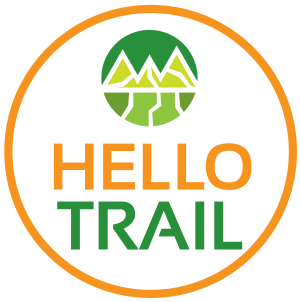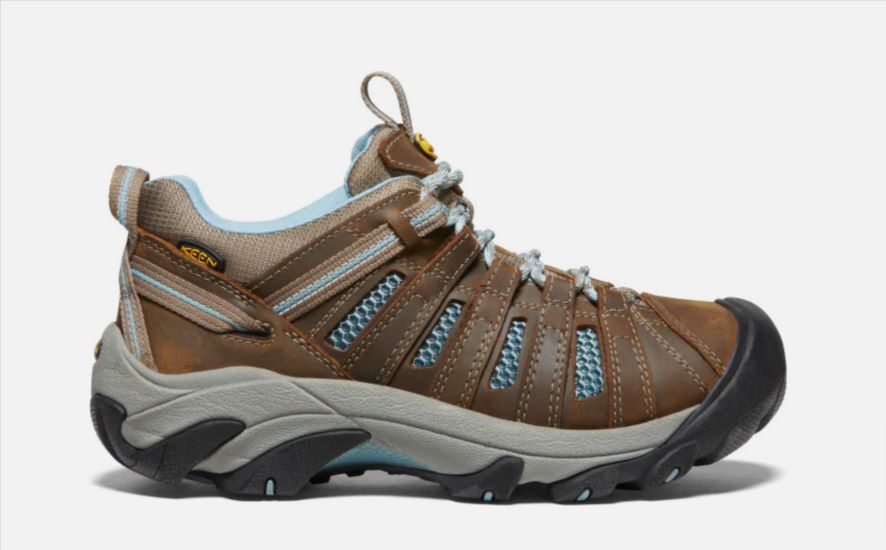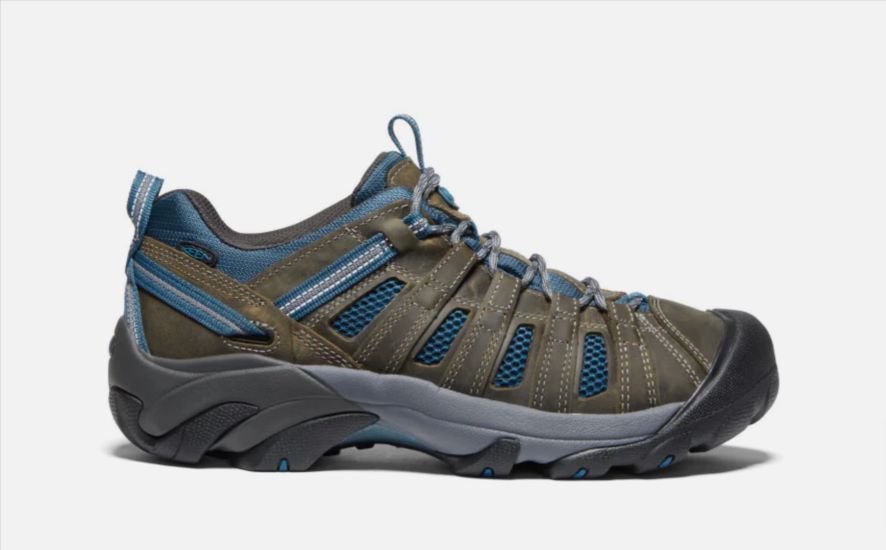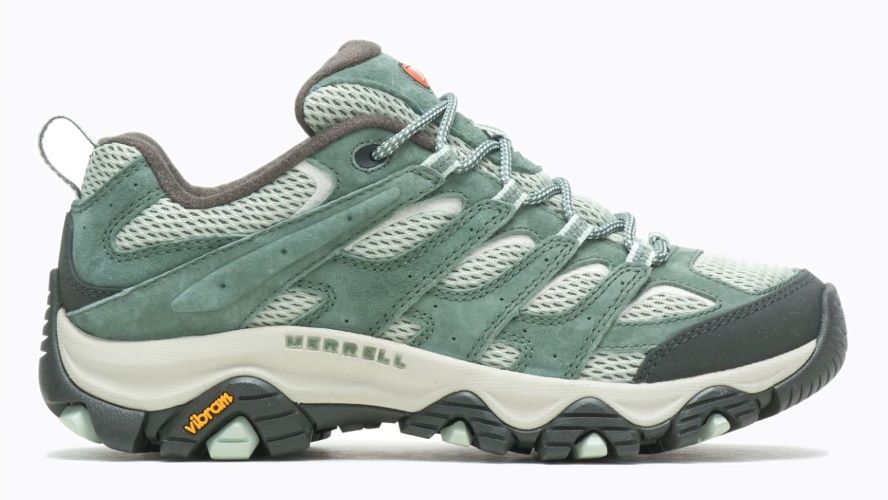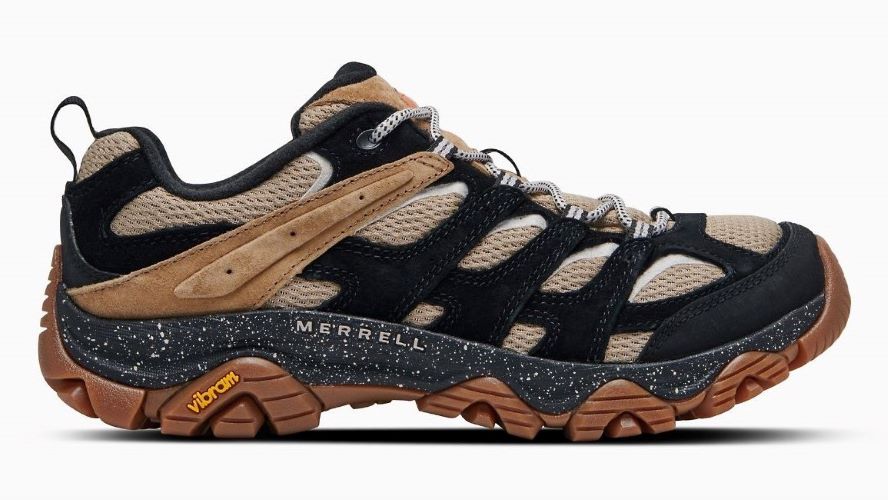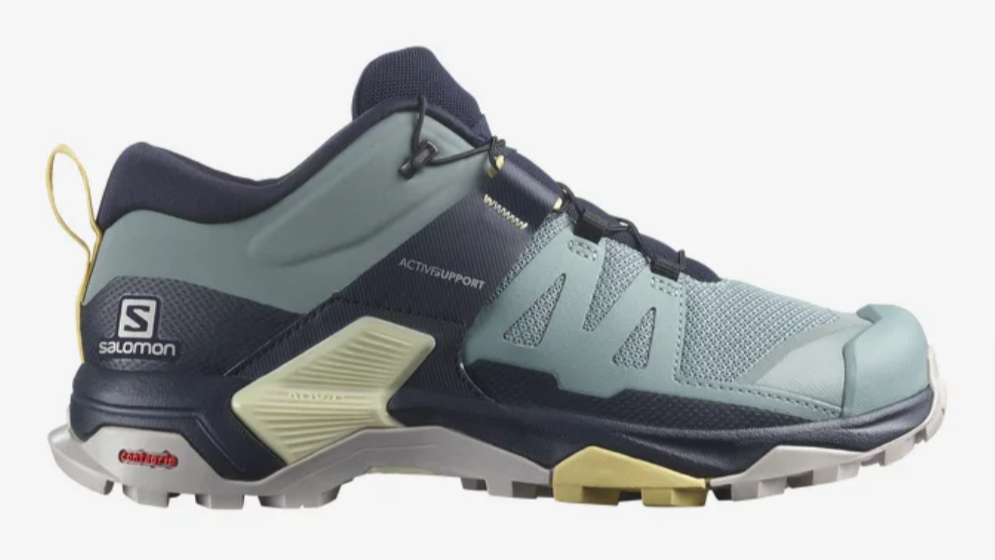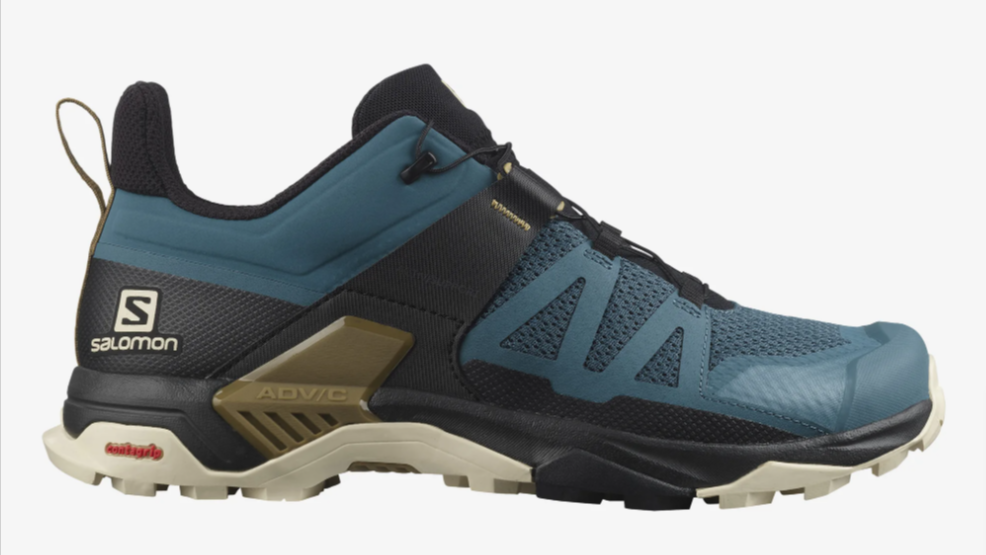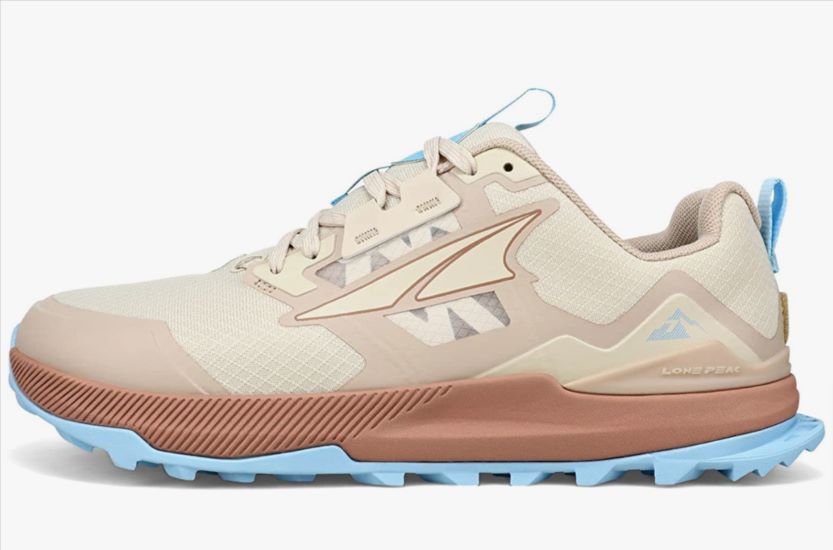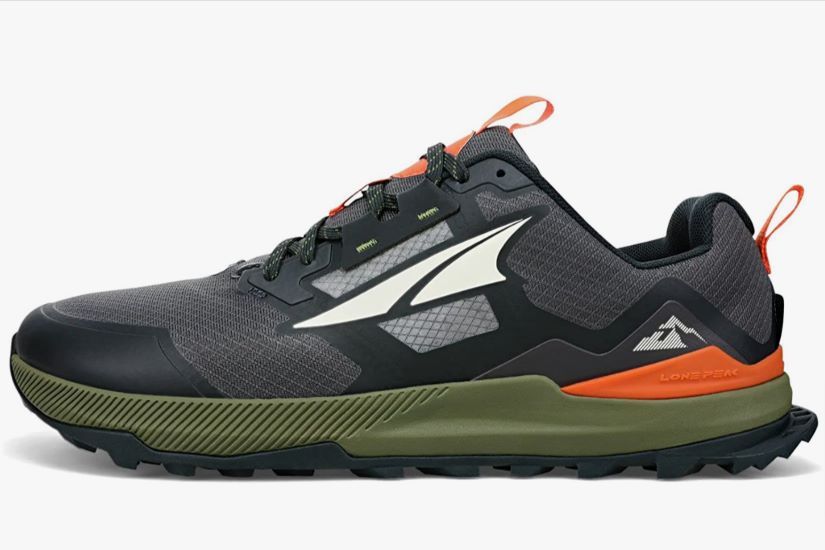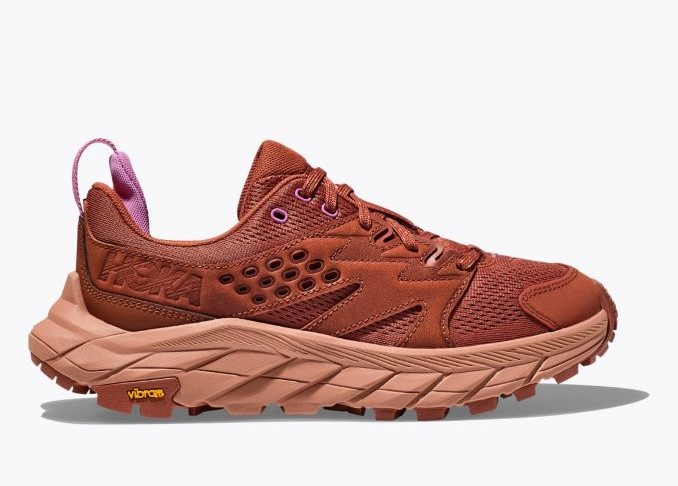Perhaps you only venture a few miles through the wooded reserve near your home? Maybe you prefer the low-cut feel of tennis shoes as opposed to high-cut hiking boots?
Or if you are like Andrew and I, you enjoy trail running and want something that can pull double duty.
Whatever your reason, sifting through the countless choices of the best hiking shoes for beginners can be a daunting task. Lucky for you, we’ve used our decades of trail experience to narrow down your choices so you can find that perfect pair!

HelloTrail® is reader-supported. We may earn a commission, at no additional cost to you, on purchases made from our expert chosen links.
Below you will find our picks of good beginner hiking shoes for both women and men, but if you feel like you need something more rugged or that provides more support, check out our complete guide to hiking boots for beginners.
Best Beginner Hiking Shoes
For those hikers that prefer a low-cut shoe over a boot, like more breathability, or just want to feel lighter on their feet, these five are the best beginner hiking shoes in 2023 that you can buy today.
All of our top picks have options for women and men and are ones both Ashley and I stand behind 100%!
KEEN Voyageur Hiking Shoes (Best Overall)
If you are looking for something durable and comfortable for daily walks and weekend hiking adventures, the KEEN Voyageur hiking shoes have exceeded my expectations.
The wide toe box is a game-changer for me, providing ample room for my toes to spread out without feeling cramped.
And the best part? No hot spots or blisters! These shoes were comfortable right out of the box and didn’t require any breaking in.
You will appreciate the breathability of these shoes, thanks to the mesh insets that provide continuous airflow and keep your feet cool and comfortable during long hikes.
Although they’re not waterproof, a waterproof version is available if needed. In fact, I tend to prefer non-waterproof hiking shoes since they keep my feet cooler in warm months and do a good job of letting any water out that happens to get in.
The new insoles in the KEEN Voyageurs are a noticeable improvement over older versions and provide excellent cushioning and arch support. I was pleased with the sizing, as I found that ordering a half size smaller than my usual size provided the perfect fit.
One thing to note is that these shoes may not be suitable for those with flat feet or who require additional insoles for support. Also, they don’t have an extra hole or eyelet for a lace lock, which may be a deal breaker for you.
The tread is designed for muddy trails, and while it performs well in those conditions, it can be slippery on smooth, slick surfaces.
I’ve used the KEEN Voyageurs at the Grand Canyon and Zion National Park, and they’ve held up brilliantly. They’re far more comfortable than my previous Adidas Terrex hiking shoes, and I don’t feel as much leg fatigue after long hikes.
I can’t recommend the KEEN Voyageurs enough as a good beginner hiking shoe. Even avid hikers will appreciate the wide toe box, breathability, and comfort without needing a waterproof barrier.
They may not be the best fit for those with flat feet or who require additional support, but for me, they’ve been an excellent investment in my hiking adventures.
Pros
– Designed for tough terrain
– Comfortable right out of the box
– Environmentally conscious materials
– Wide toe box and no hot spots
Cons
– May need to order a full size down
– No extra hole or eyelet for a lace lock
– Slippery on flat surfaces and dangerous on smooth, slick floors
Merrell Moab 3 (Best Budget Hiking Shoes)
As someone who loves to hike and explore the outdoors, the Merrell Moab 3’s have proven to be comfortable and supportive for my feet. It’s easy to see why they are one of the best hiking shoes for beginners year after year.
When I put them on, I instantly noticed how comfortable they felt. I didn’t need any break-in time, which is a huge plus. I have narrow feet, but I do know that those of you with wide feet have trouble finding shoes that fit properly.
Luckily, the Moab 3 hiking shoes are available in wide-width sizes, making them a perfect option for all foot types.
During our hikes, Ashley noticed that these shoes provide excellent arch support, which has been a lifesaver for her plantar fasciitis. She has been able to enjoy long walks without experiencing any pain.
The Vibram soles are also a huge advantage, as they provide a good grip on various terrains, whether I’m hiking on rocky trails or walking on pavement.
I appreciate the eco-friendly aspects of these shoes, as they are made with 100% recycled materials for the mesh lining, laces, and webbing. The mesh on top of the toe box also provides great air circulation, keeping my feet cool and comfortable during long hikes.
The only downside I’ve noticed is that the shoes may not provide the best traction on icy surfaces. However, this hasn’t been a significant issue for me, as I mostly hike in non-winter conditions.
The Women’s Merrell Moab 3 Hiking Shoes are ideal for beginner hikers needing a comfortable, supportive, eco-friendly shoe that can handle various terrains. I highly recommend trying these out if you have wide feet or require additional arch support during your outdoor adventures.
Pros
– Comfortable and supportive, even for those with foot conditions like plantar fasciitis
– Lightweight and versatile, suitable for day hikes and various activities
– Made with 100% recycled materials for the mesh lining, laces, and webbing
Cons
– Might not provide the best traction on icy surfaces
– May not be suitable for longer backpacking trips or more demanding hikes
Salomon X Ultra 4 Low (Best for Hiking AND Trail Running)
Overall, I’ve been pleased with the performance, stability, traction, and comfort of the Salomon X Ultra 4 low hiking shoes.
The SensiFit™ technology, ADV-C chassis, and Contagrip® MA outsoles provided secure and stable wear on different surfaces, ensuring I felt supported throughout my hikes.
The lightweight design and good air ventilation were a pleasant surprise, as my feet didn’t feel weighed down or overheated during my hikes.
I did notice that the shoes needed a bit of breaking in before they felt completely comfortable for long-distance hikes.
The quick lace system was convenient and allowed me to easily put on and take off the shoes, although I did find that I had to readjust the tightness occasionally.
In terms of sizing, I recommend going half a size up from your normal shoe size for the best fit.
While these shoes have been great for my daily treks and trail runs, I have noticed that the materials seem to wear down a bit quicker on rocky terrain.
I’ve found that the Salomon X Ultra 4 Low hiking shoes work best for hikers tackling moderate terrain and who don’t require a fully waterproof shoe.
The lightweight design and excellent support make them a great choice for day hikes.
Pros
– Lightweight design and good air ventilation ensure comfort during hikes
– Quick lace system allows for easy on and off and convenient adjustments
– Offers good cushioning and ankle support even for a low-cut shoe
Cons
– They tend to wear down quicker than other hiking shoes
– You should break them in before any long-distance hikes
– Sizing may run small, so it’s recommended to go half a size up for the best fit
Altra Lone Peak 7 (Best Lightweight Hiking Shoes)
After putting almost 100 miles on my Altra Lone Peak 7 hiking shoes, I feel confident in sharing my experience with these trail runners. As someone who enjoys long distance hiking and trail running, these shoes have been a comfortable and supportive companion on the trails.
The first thing I noticed about the Lone Peak 7s is their lightweight feel, making them great for long days. The wide-toe box of all Altra shoes is by design and has had a positive impact on my overall comfort.
The Altra Lone Peak 7s come in a variety of great colors, which is a nice touch for those who like a bit of style on the trail and are looking for a nice option to wear around too.
However, I have noticed some minor durability issues, particularly with the outside of the shoe showing some wear and tear after only a month of use.
While this hasn’t been a deal breaker for me, it’s something to consider for those who will be tackling extremely rugged terrain or extended use.
In terms of fit, I found that going down half a size was the best option for my narrow feet.
The six eyelets, gusseted tongue, and heel tab made it easy to put on and adjust the shoes to my desired tightness.
I believe the Altra Lone Peak 7s would be an excellent choice for beginner to intermediate hikers and trail runners who appreciate a comfortable, lightweight shoe with a wide toe box.
They may not be the best option for experienced trail runners seeking top-of-the-line durability, but they have served me well thus far.
Pros
– Wide toe box for all-day activities and swelling
– Suitable for beginner to intermediate hikers and trail runners
– APMA Seal of Acceptance for promoting good foot health
– The various color options make it easy to wear them all day going from trail-to-town
Cons
– Durability issues, especially when tackling rugged terrain
– Narrower upper compared to older models
– Slightly heavier than the Lone Peak 6
Hoka Anacapa Low GTX (Best Cushioned Hiking Shoes)
The Hoka Anacapa Low GTX Hiking Shoes have served me well as someone who often hikes on various terrains and occasionally encounters wet weather.
Thanks to the use of Gore-Tex, your feet will remain dry during those unexpected rainy hikes, which is a huge plus.
The Vibram Megagrip rubber outsole provided excellent traction on uneven terrain, rocks, and even icy trails. I felt safe and secure with every step I took.
In terms of comfort, the shoes are very supportive and have helped alleviate some of the foot pain I’ve experienced in the past.
However, I did find the sizing to be a bit off, as they seem to run small. I had to order a half size larger than my usual size for a comfortable fit. The toe box was roomy for me, but I can see how it might cause irritation for some users.
I appreciated Hoka’s sustainability efforts, using recycled materials and leather certified by the Leather Working Group.
The style may not be to everyone’s taste, but I tend to look past that when something functions as well as these Hokas do.
The only concern I have with these shoes is their durability. Other hikers have mentioned issues with the sole separating from the shoe after a short period of use. I haven’t experienced this problem yet, but it’s something to keep an eye on.
The Hoka Anacapa Low GTX are a great option for beginner hikers who are looking for a comfortable, waterproof, and lightweight shoe with excellent traction on various terrains.
Just make sure to order a half to a full size larger than your usual size for the best fit, and consider replacing the insoles for better support if needed.
Pros
– Comfortable and supportive, potentially alleviating foot pain
– Excellent traction and grip on various terrain
– Lightweight and suitable for day hikes and everyday wear
Cons
– The style may not be for everyone
– Insoles may need to be replaced for better support
What to Look for in Good Hiking Shoes for Beginners
Hiking Shoe Types and Purpose
The first thing to understand is the difference between hiking shoes and hiking boots. Hiking shoes tend to be relatively low cut, rising at their highest point below the ankle, while hiking boots generally provide encompassing ankle support.
Hiking boots are made for rough trails, uneven terrain, and spending extended lengths of time in the backcountry. They provide the physical support you need for hauling a heavy backpack and for overcoming trail obstacles.
Shoes, on the other hand, are made for moving fast across relatively even terrain, smooth trails, and carrying lighter loads. Perfect if you are mainly going on beginner hikes.
Both have a distinct purpose and many experienced minimalist hikers have set their sights on hiking shoes as an appealing alternative to heavier hiking boots.
Trail runners are not to be confused with hiking shoes, but are often used in the backcountry as an efficient way to get from point A to point B when speed is of utmost concern. These ultralight options are not intended for backpacking purposes but are often seen on the trail.
The disadvantages of trail runners? Minimal toe and underfoot protection.
Approach shoes are also often lumped under the category of hiking shoes, but it needs to be understood these shoes serve a niche market. Approach shoes are utilized by rock climbers or hikers requiring movement across steep, rocky terrain.
Approach shoes are defined by a sticky rubber toe rand that provides for maximum grip on rock. They’re not as comfortable for long distances but are a quality choice for hikes that involve scrambling across boulder fields or low-grade rock climbing.
Hiking Shoe Materials
Here is a breakdown of the different parts of a hiking shoe so that you understand the meaning of each component when you’re researching different types of shoes. You’ll want to know what your shoes are made of so you can evaluate comfort, durability, and different terrain suitabilities.
Upper: The upper comprises the components of the shoe that enclose your foot, excluding the rubber sole. The upper is responsible for providing breathability and waterproofing if you choose that option.
Uppers are usually constructed of synthetic nylon and mesh or nubuck leather. While nylon and mesh panels offer the most breathability, leather uppers offer increased abrasion resistance. Leather is also heavier than synthetic materials.
Often, shoes offer a blend of nubuck leather and nylon mesh to provide for combined abrasion resistance and breathability.
Midsole: Midsoles are tasked with providing shock absorption and protecting the feet from harsh external elements such as rocks or tree roots. Midsoles are usually constructed of EVA, which is a molded foam, or thermoplastic polyurethane (TPU).
While EVA provides more cushioning, it tends to break down over time. TPU on the other hand is typically less comfortable, but will maintain its shape and is much less likely to break down over time. Many manufacturers incorporate TPU into the shank of the shoe and add EVA underfoot for comfort.
Outsole: This is the part of the shoe that makes contact with the trail. While usually constructed of rubber, there are some shoes that are developed with mostly foam and partial rubber integrated into the foam.
Outsoles provide traction when the conditions get slippery or rocky, but a hiking shoe’s outsole is going to be much less burly than its hiking boot comrade.
Vibram dominates the market of outsoles similarly to how Gore-Tex serves as the most common waterproofing option, although some brands offer their own proprietary materials.

Features to Consider
Toe Protection
Toe caps are a great way to ensure you don’t jam your toes or bruise your feet from contact with rocks, roots, and other trail obstacles. Hiking shoes are typically designed with toe caps whereas trail runners, for example, are often designed without.
If you’re a true minimalist hiker in the backcountry you could forego toe protection but otherwise, it is highly recommended.
Waterproof or Not
While this is sort of a no-brainer when discussing hiking boots unless you strictly hike in dry, arid conditions, hiking shoes don’t necessarily offer standard waterproofing on their products — although you are usually given the option to opt-in.
A waterproof, breathable membrane is highly recommended for stream crossings, muddy trails, and unexpected rainfall, but because hiking shoes boast a typically low-cut profile, a waterproof layer on a hiking shoe doesn’t offer as much protection as it does on a hiking boot, so the decision really comes down to personal preference.
A waterproof layer adds weight and will also increase the cost of a hiking shoe, but will prevent your feet from getting wet. Gore-Tex is the most common form of waterproofing available.
Wrapping It Up…
Whether you’re strolling through your local city park or packing up to hit the backcountry for an afternoon in nature, you’re going to need the right footwear to get you to your final destination.
Hiking shoes fill the perfect gap between city wear and burly boots making them great to wear every day. They even serve as the ultimate solution for that casual hiker or perhaps the most minimalist backpacker who prefers to keep things light in any conditions.
This guide to the best hiking shoes for beginners should help get you started in the right direction — but whichever trail you choose to take, don’t forget to stop and look around.
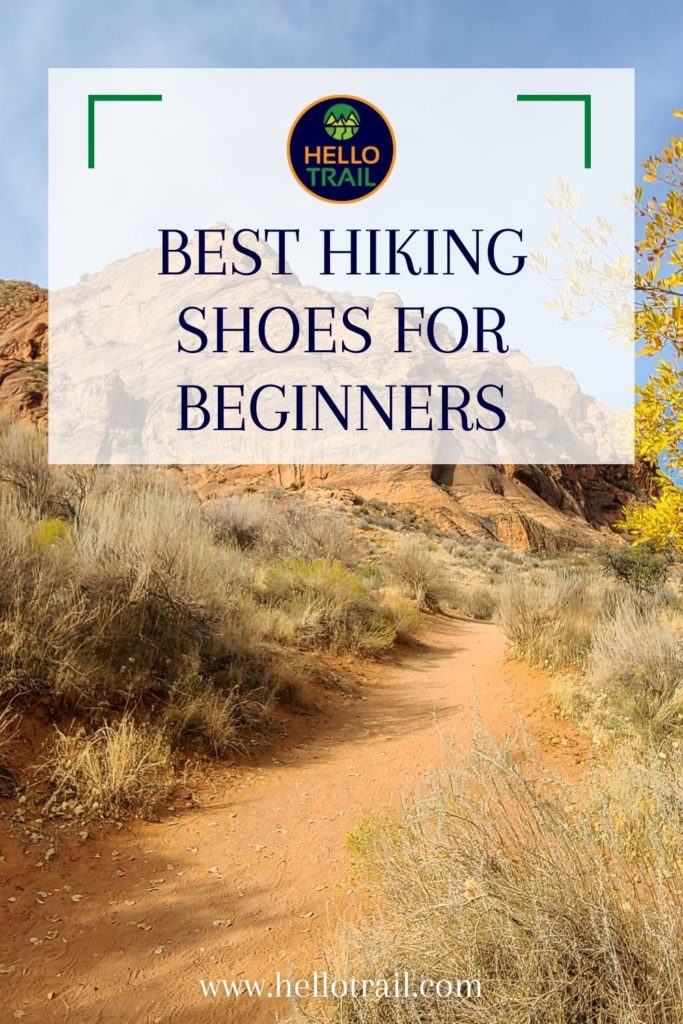
Beginner Hiking Shoes FAQ
Is it okay to wear running shoes for hiking?
Absolutely! Now, this really depends on the type of trail you’ll be tackling. If it’s a well-maintained trail without a lot of obstacles, running shoes should be fine. They’re light and comfy and perfect for such conditions. But if we’re talking about rocky, uneven terrain, or slippery slopes, running shoes might lack the needed ankle support and robust soles. In these situations, proper hiking shoes or boots would be safer and more comfortable.
Do hiking shoes make a difference?
A good pair of hiking shoes can make a huge difference. Speaking from personal experience, a good pair of hiking shoes is like a reliable old friend. They provide support, protection, and comfort. They’re designed to handle a variety of terrains and weather conditions that you might encounter while hiking. Also, hiking shoes typically have better traction, sturdier soles, and more durable materials than regular shoes.
Should I buy hiking shoes a size bigger?
In general, it’s not a bad idea to go half a size to a full size bigger when it comes to hiking shoes. Why, you ask? Well, your feet tend to swell after hours of walking, and having that extra bit of space can keep your toes from hitting the front of the boots, especially during downhill hikes. But remember, too much extra space can cause blisters due to foot movement within the shoe. It’s a delicate balance, and trying on several pairs with your hiking socks is the best approach.
Should hiking shoes be light or heavy?
Ah, the age-old debate. The answer is – it depends. Light hiking shoes are fantastic for shorter, faster hikes or when you’re carrying a light pack. They’ll help you move swiftly and won’t weigh you down. On the other hand, heavier footwear is often more durable, offers more support and protection, and is great for longer treks with a heavier backpack.
